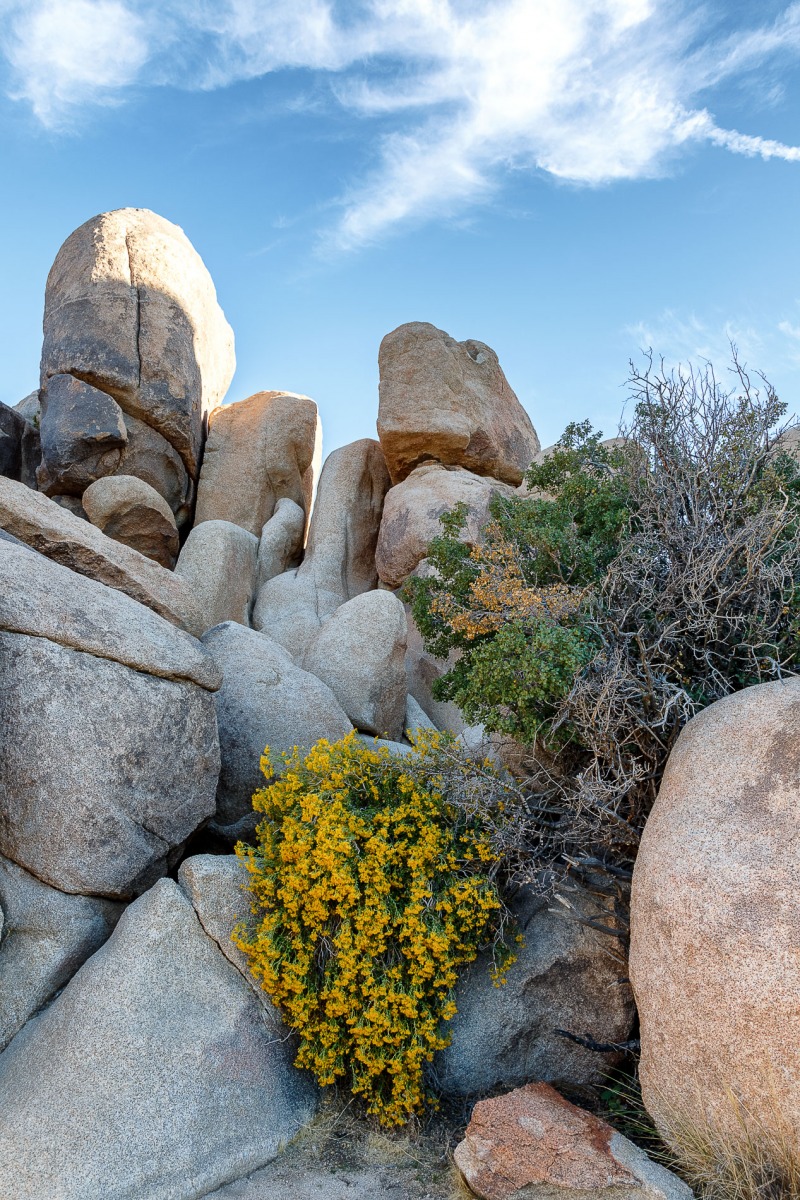The Joshua Tree
I am not sure how best to describe a Joshua Tree to someone who has never seen one, but the term “Alien” definitely comes to mind.

By any definition, it sure is a strange looking tree.It is actually a member of the Yucca family, but grows like a tree, i.e. tall with branches. However all resemblances with a tree stop there. The Joshua Tree is simply a unique plant and only grows in the Southwestern United States, in, and, surrounding the Mojave Desert to be more precise. For non US-friends reading this blog, Mojave is pronounced “Mo-HAH-Vee”.
Anyway, Linda and I are on a mission to visit every National Park in the US so we decided to visit Joshua Tree National Park, in Southern California. I had been there once before with my son, but that was a long time ago and a visit, together with Linda, was well overdue.

Overwintering in Southern California
We were staying in an RV Resort in Palm Desert (just south of Palm Springs) in our motorhome. This resort was simply awesome and we were there in October, just in-between “seasons” as the summer crowds were gone and the “snowbirds” (a term used for RV-ers who overwinter in the South, just like migratory birds) had not yet arrived. As a result, the resort was pretty empty, we had ample room and even had the magnificent swimming pool (and hot tub) all to ourselves . . . every time we went.
Getting to Joshua Tree National park was about a 45 minute drive, this was to the North Entrance of the park. As it was going to be a hot day (98F) we decided to leave early and get some early shots before it got too hot. We also knew, from visits to other National Parks, that if you arrive too late, every man and his brother is there too, often making the experience somewhat less then great. So, off we went, leaving around 6 am and getting to the park well before 7. It was cool, the sun was just coming up and the place was empty, just ourselves and Nature . . . perfect.
There is beauty everywhere, even in the desert
Despite its alien nature, the park is quite attractive and we saw some beautifulI locations with wild flowers and interesting formations of granite boulders. In fact, it is not just the unusual vegetation that makes this park so interesting, the Eastern part of the park is littered with these piles of of huge boulders, like some giant piled them up in a random fashion, a long time ago. Today, these “clumps” of boulders have become popular with rock climbers, who use them for practice, training and just for fun. We stumbled upon a an area called “banana crack rock”, a challenging rock formation that is popular with rock climbers who like a challenge. The main reason for its popularity is the steep cracks on its west face. Banana Cracks Rock is short, only about thirty five feet, but it sits on top of a jumble of large boulders about another thirty five feet high themselves. The approach to the base is somewhat precarious to say the least. Some climbers rope up for the approach to the base. The safest approach, however, seems to be scrambling on large boulders on the left side of the west face. Pretty cool.

On a side note, the original “Banana crack” term comes from those stringy “things” you peel off a banana. Apparently, when you dry them, you can smoke them and get high (look it up!). No wonder there us a strain of cannabis now that is also called “Banana Crack”.
Anyways, I digress . . . Parts of the park reminded us of Death Valley, not surprising perhaps as Death Valley lies only a short distance to the North of Joshua Tree and is also dry and located in the desert.
Joshua Tree National Park actually contains TWO different kinds of deserts, the Mojave type, found in the higher portions of the park and the Colorado type, found in the lower elevations.The two are distinctly different and you can clearly see the vegetation and “look” change as you pass through the park. Nested in a secluded area between these two desert types is the Cholla Cactus Garden. If you thought Joshua Trees looked weird, wait until you see the cacti that grow here! Amazing.

Check out the pictures of this very interesting park and if you are ever in the area, make sure you take some time off and check it out. It is well worth a visit!


Recent Comments